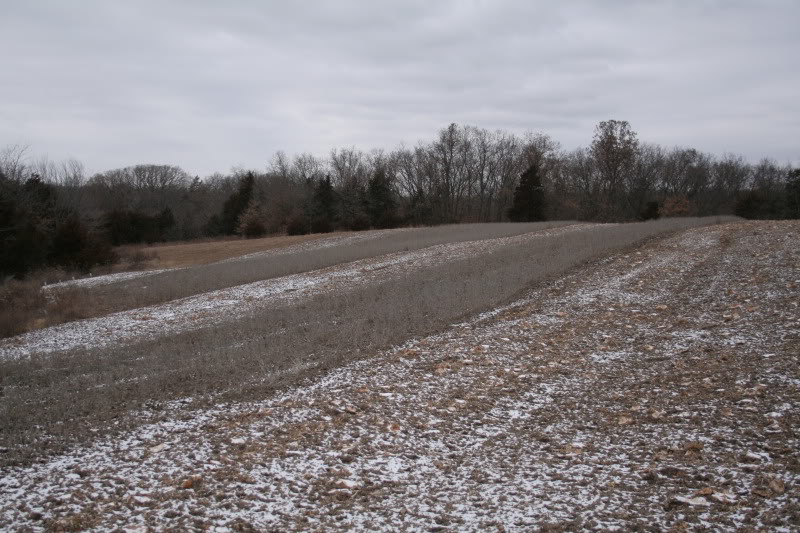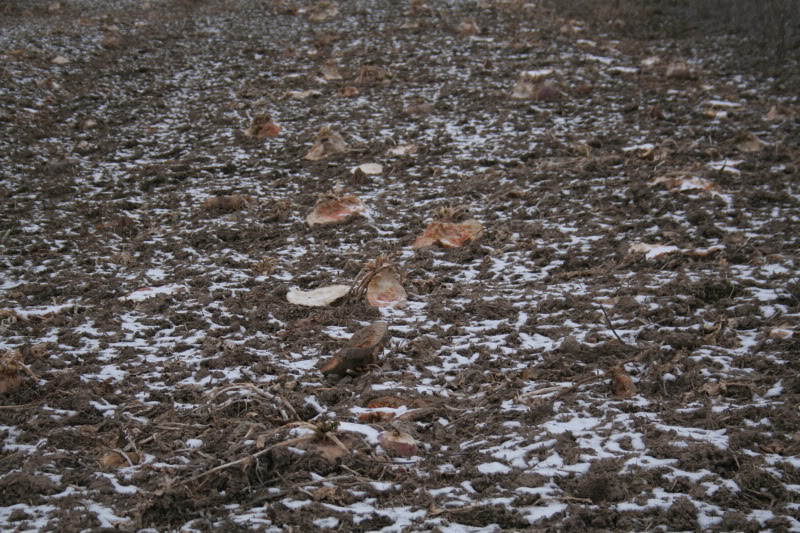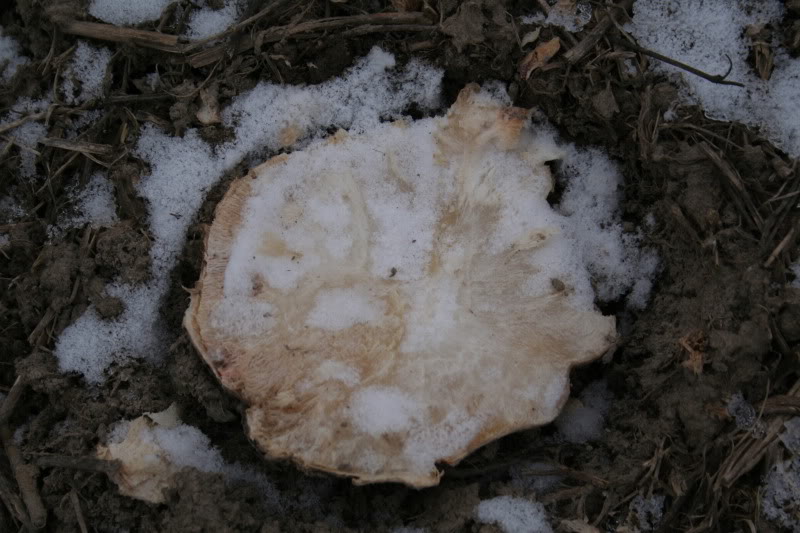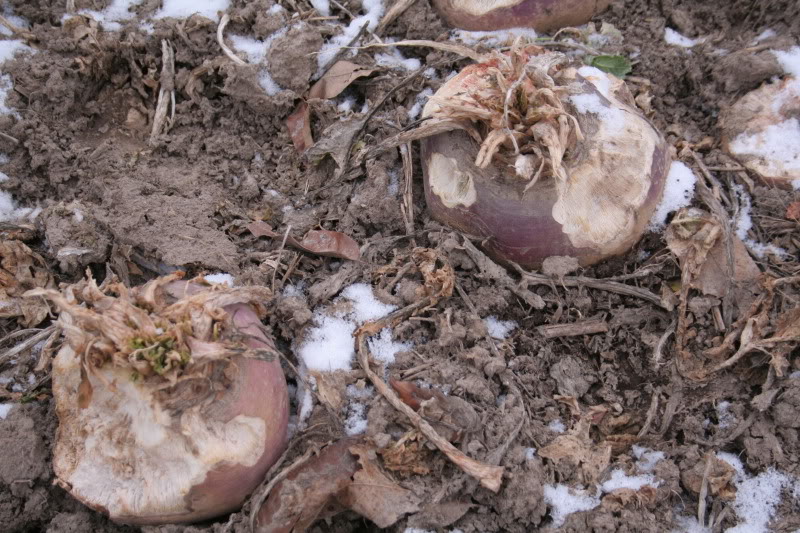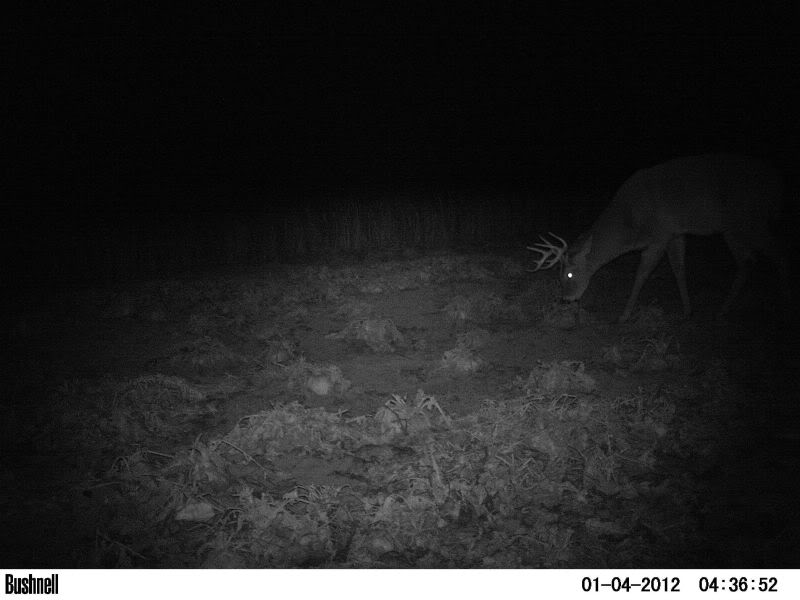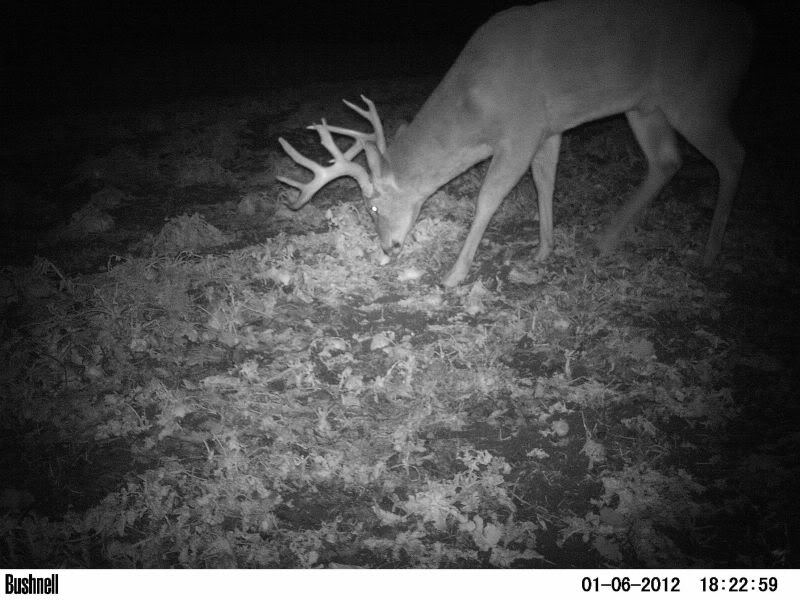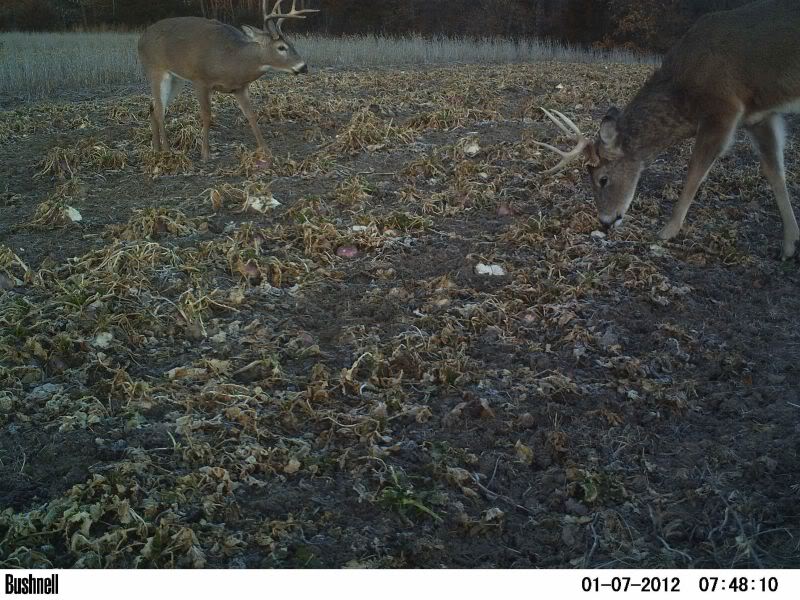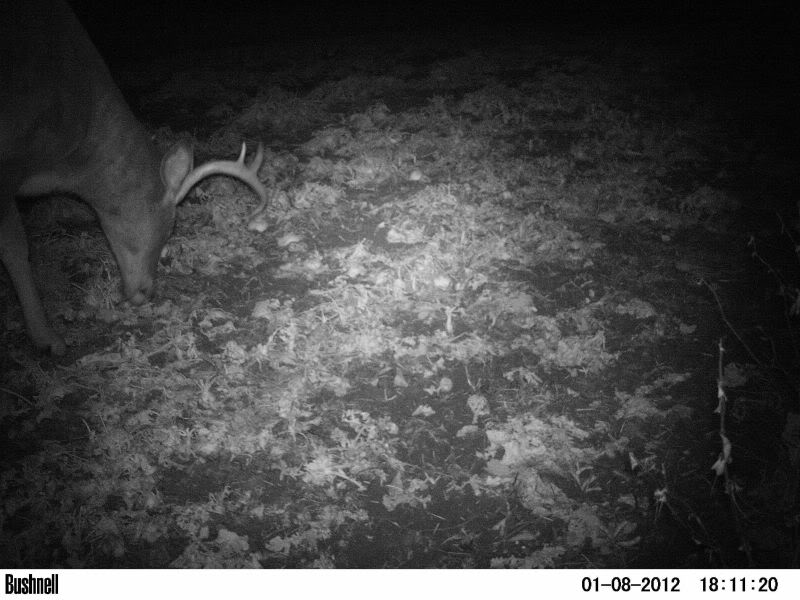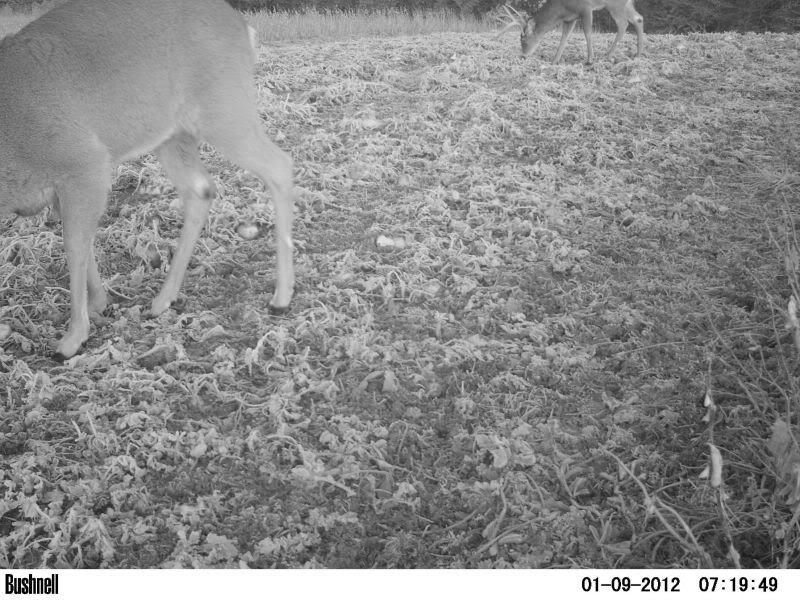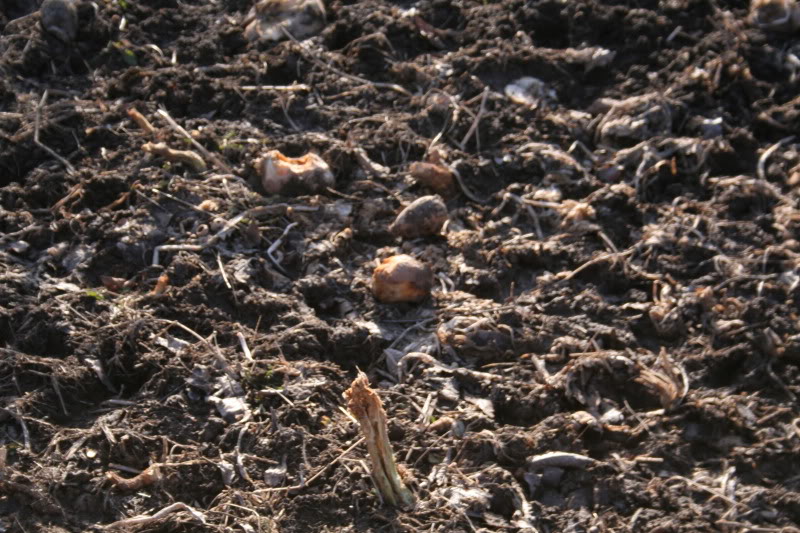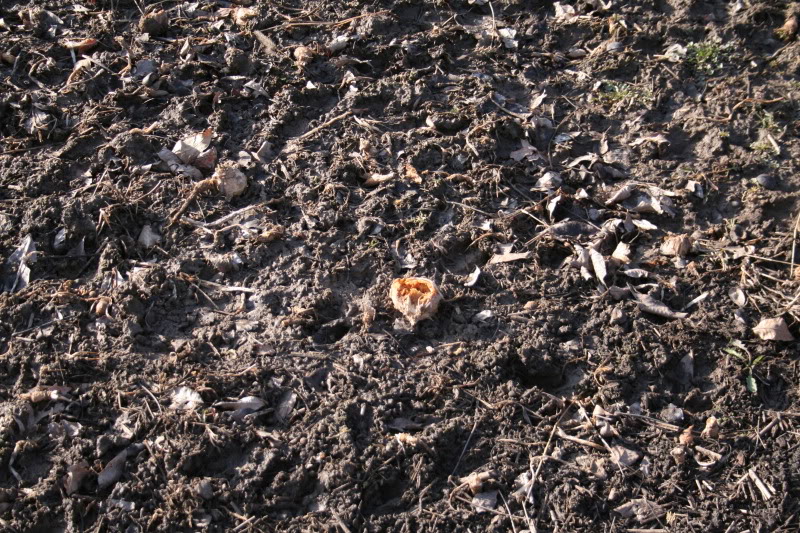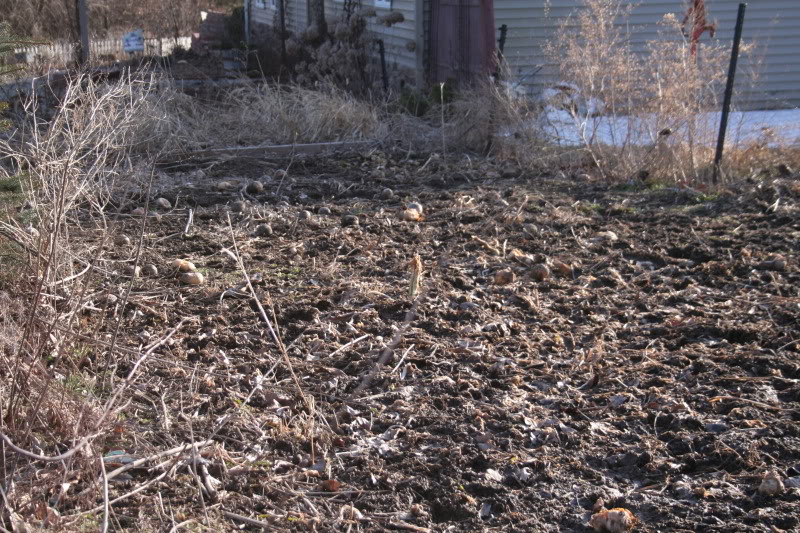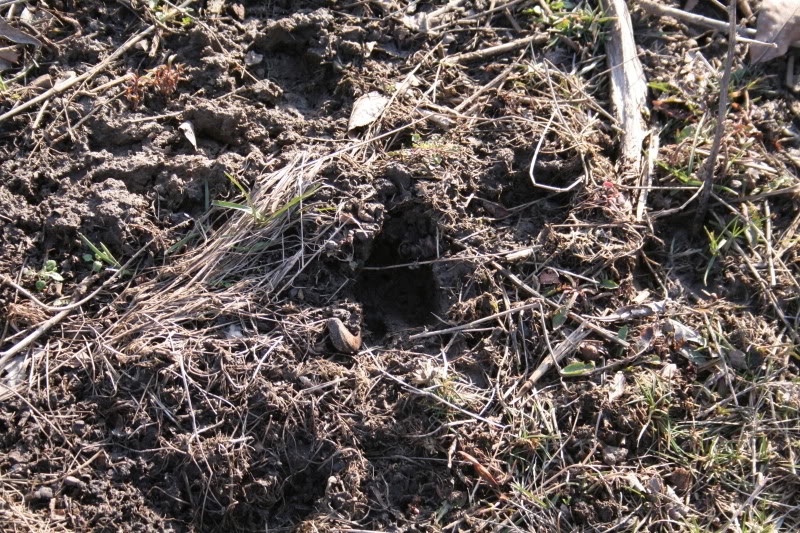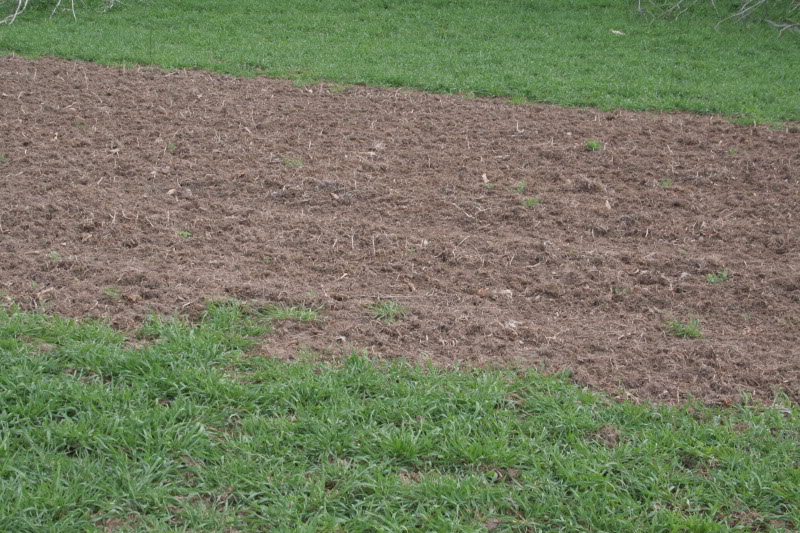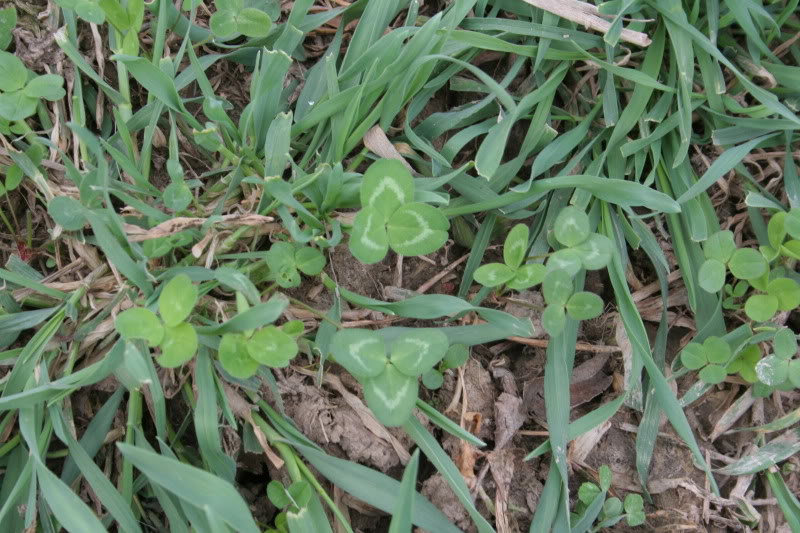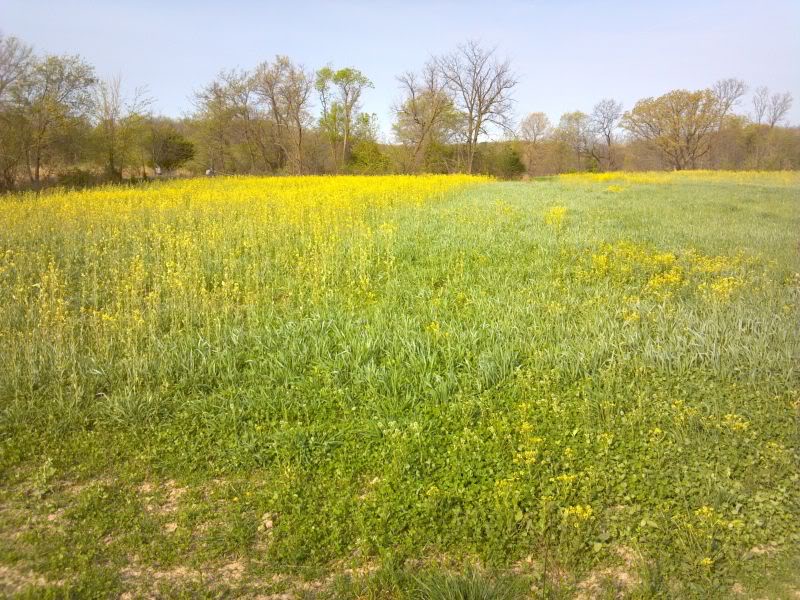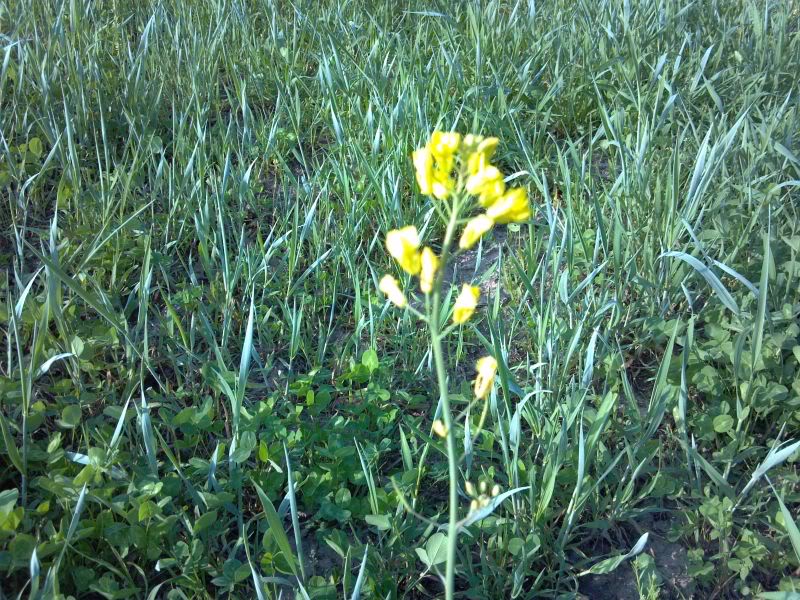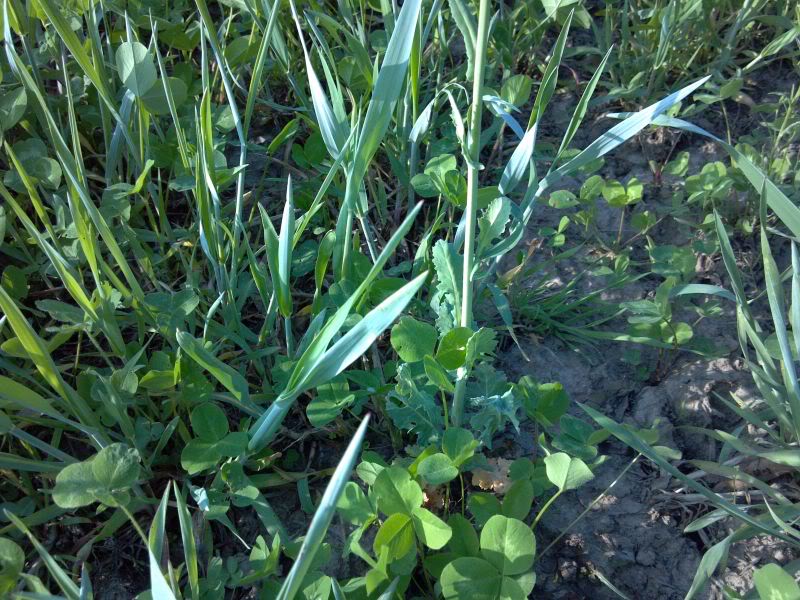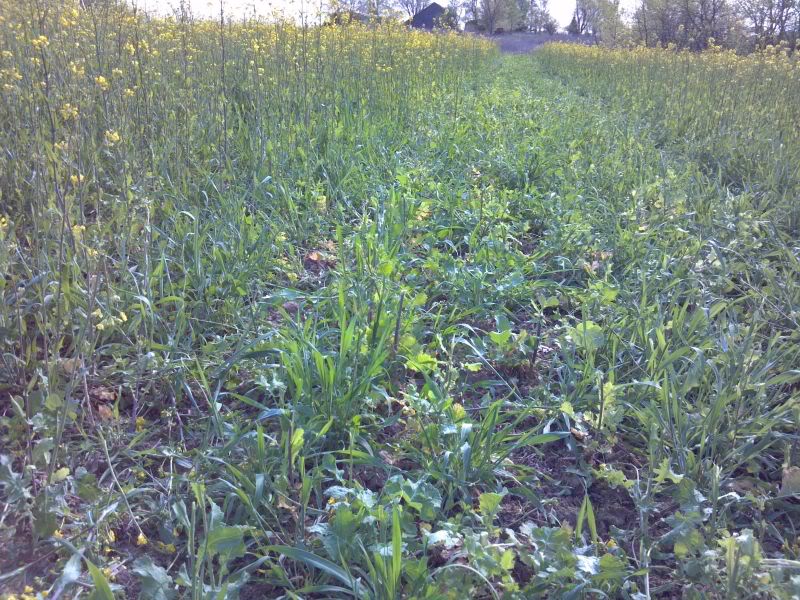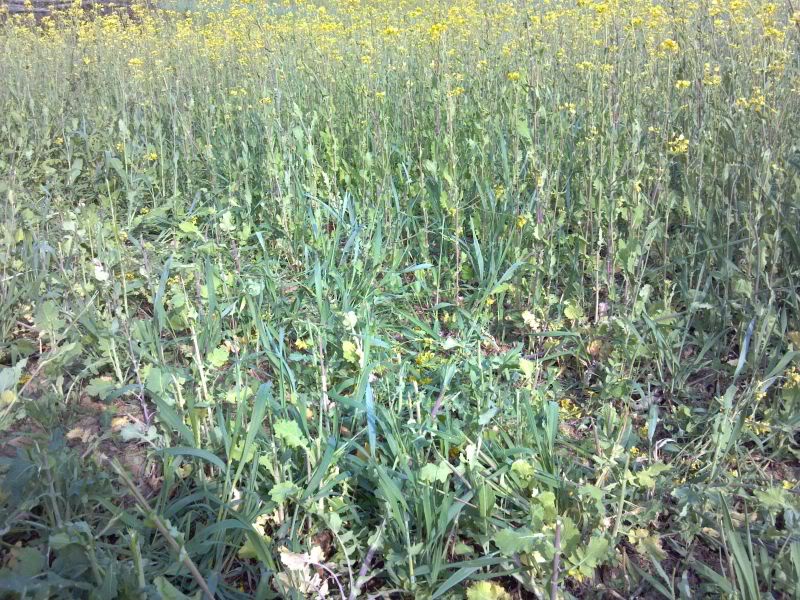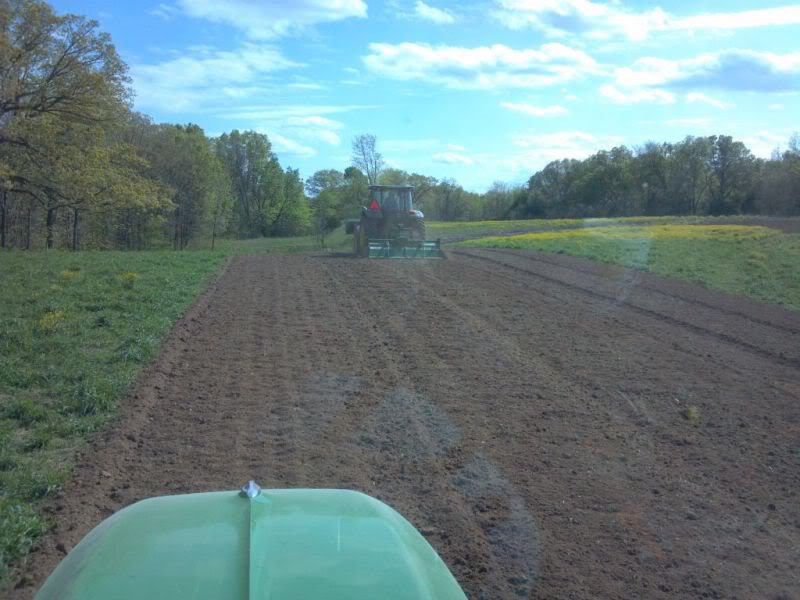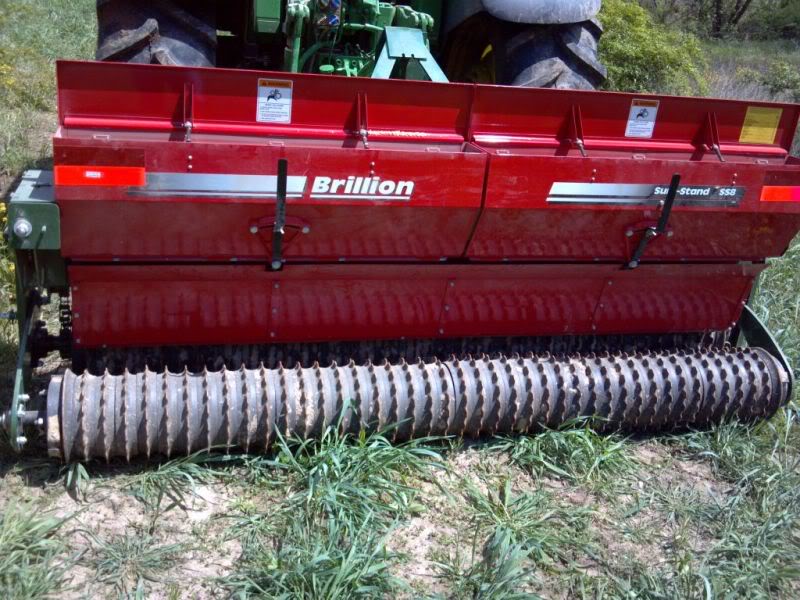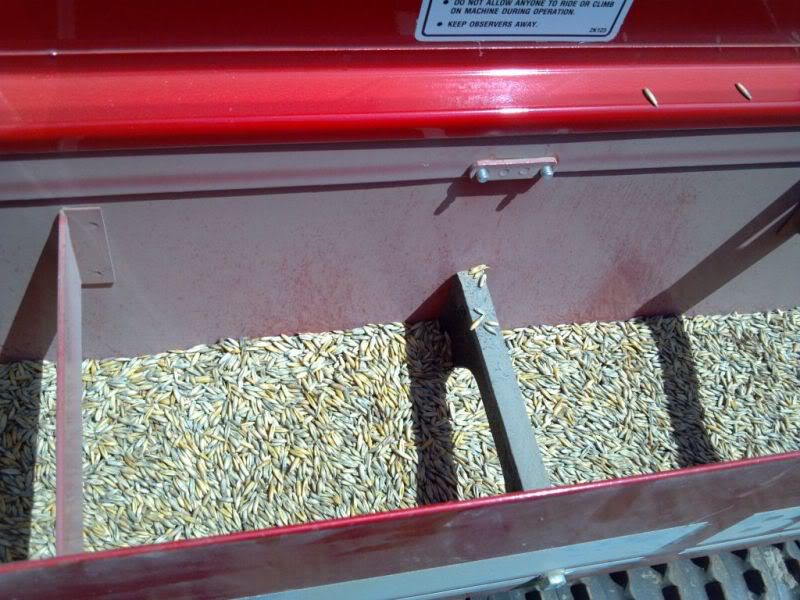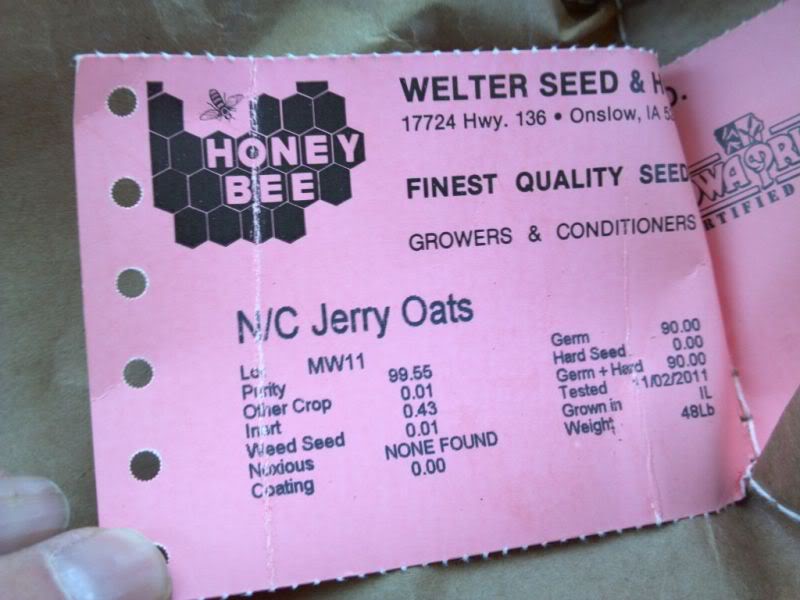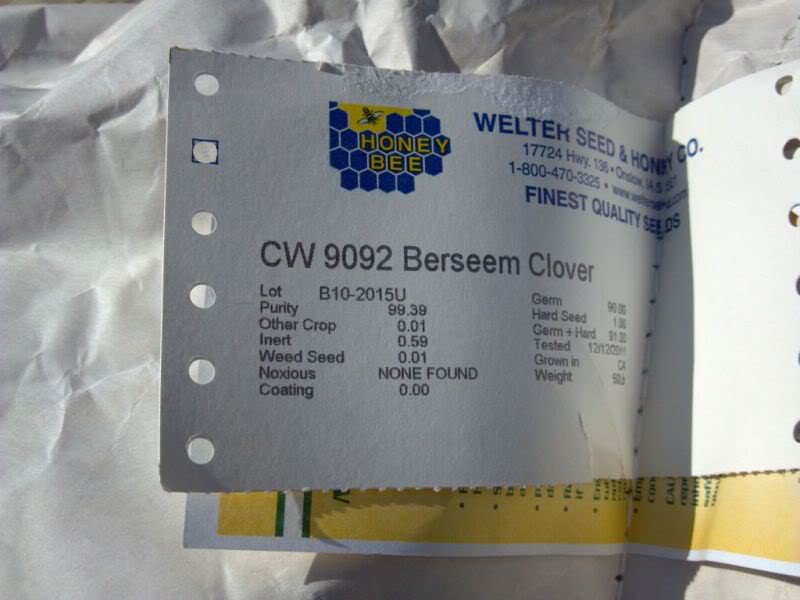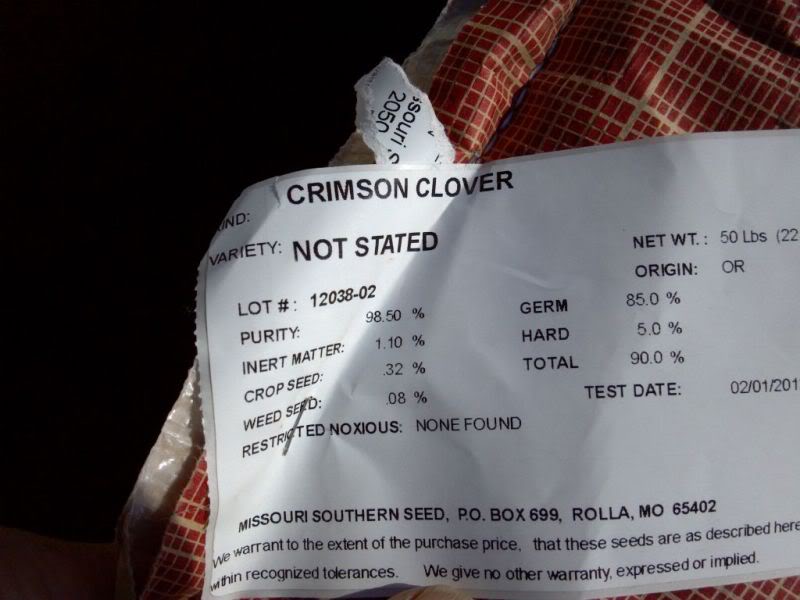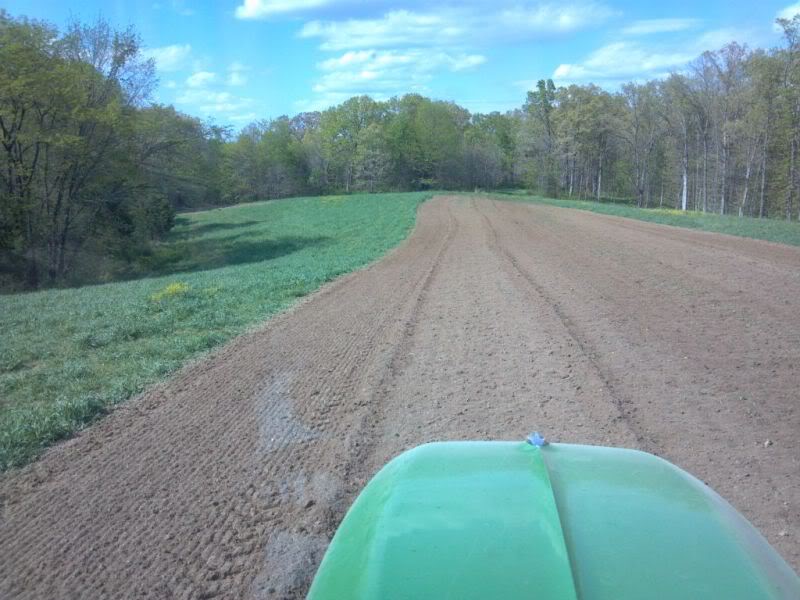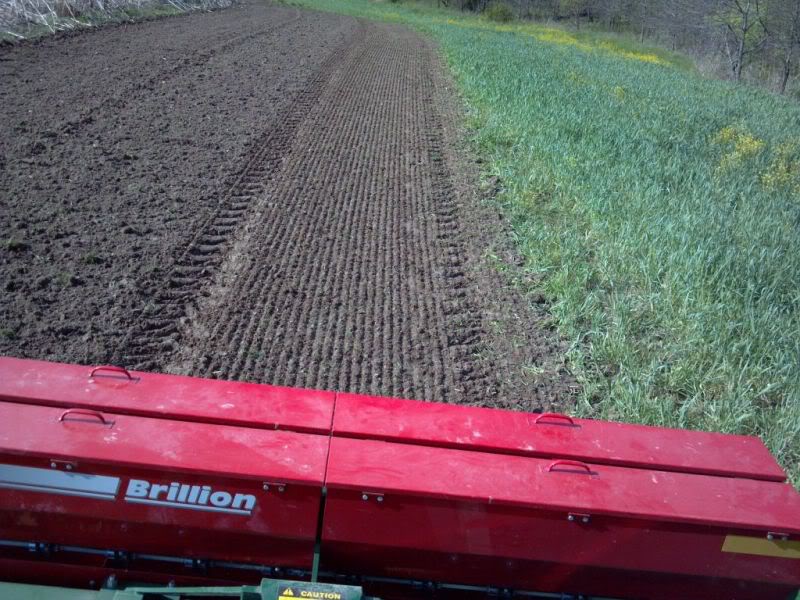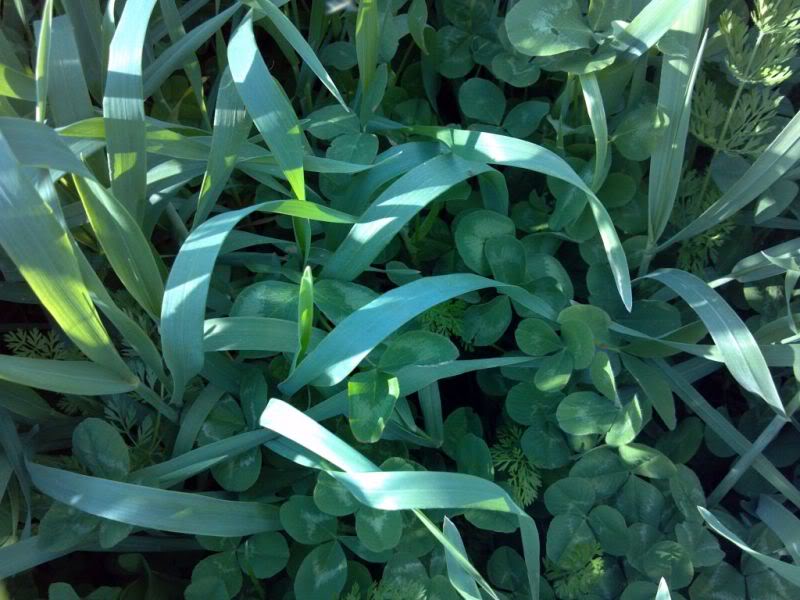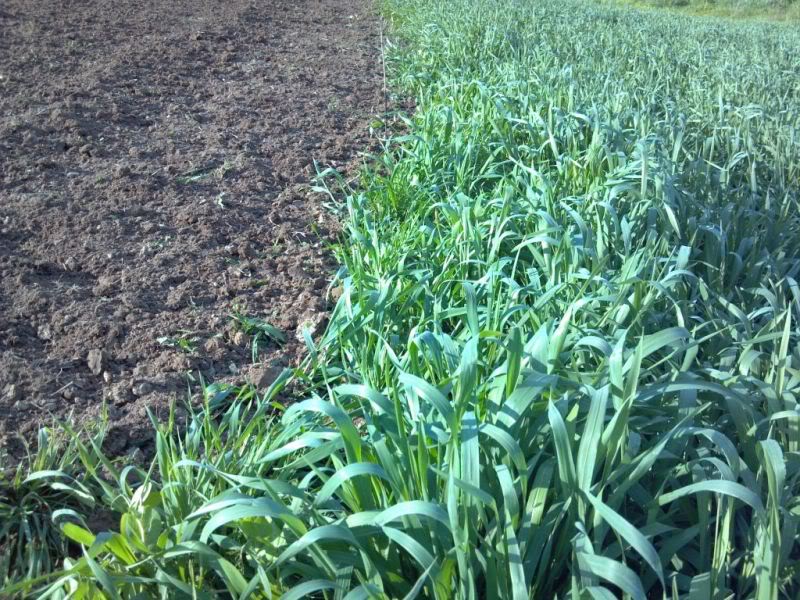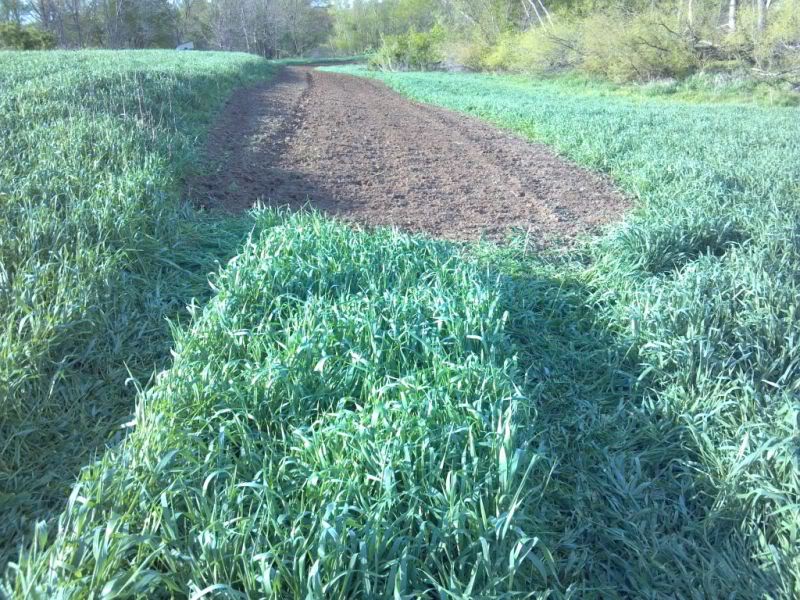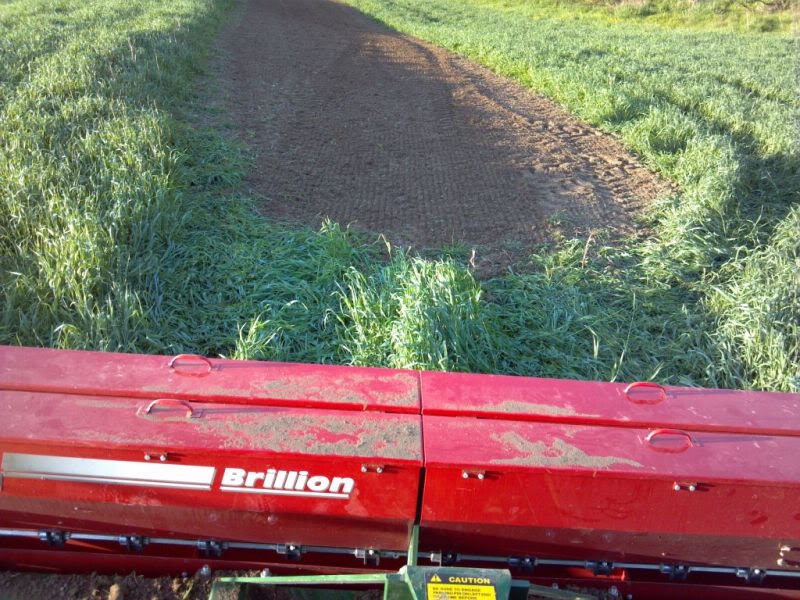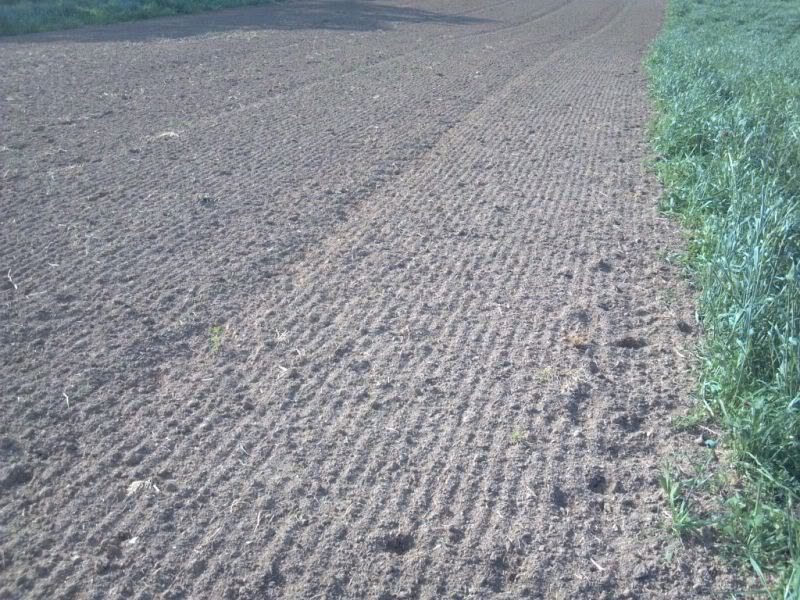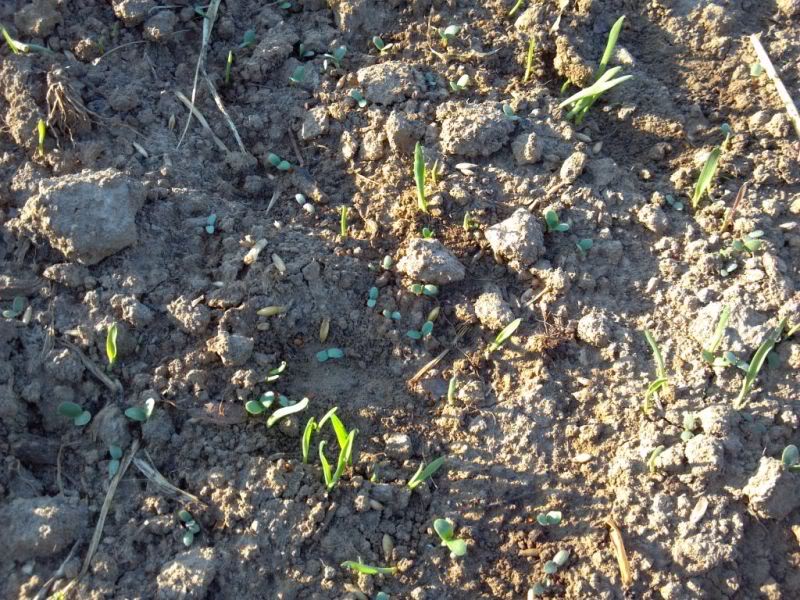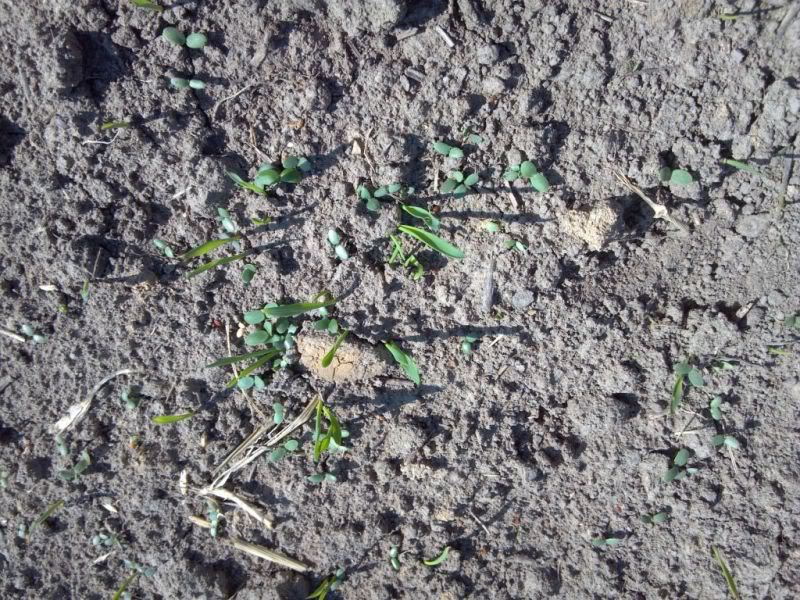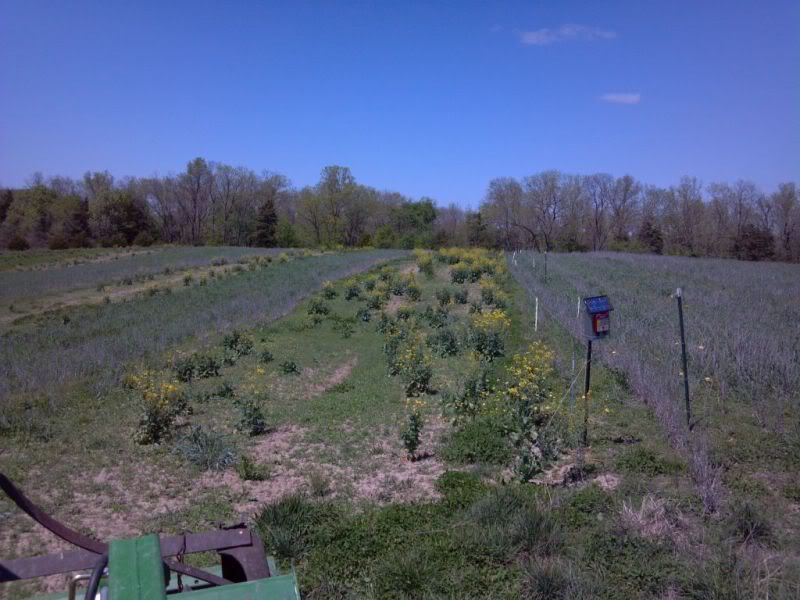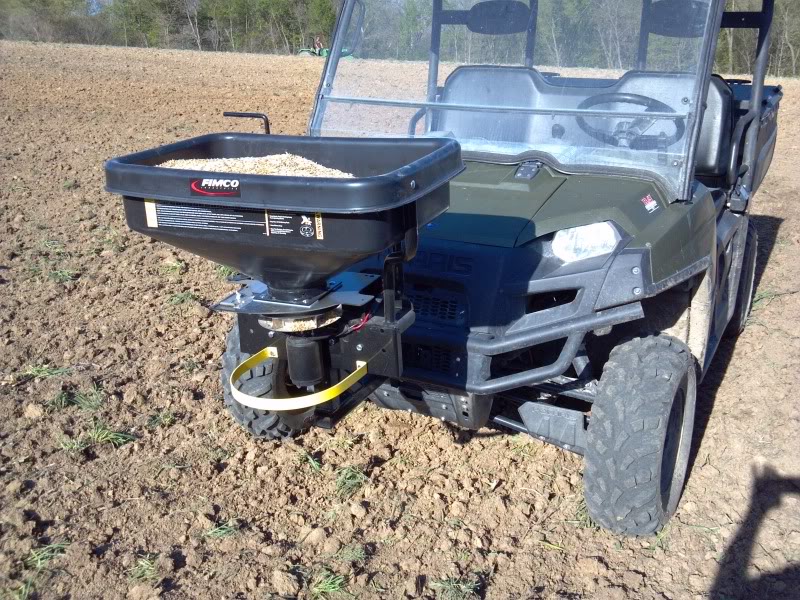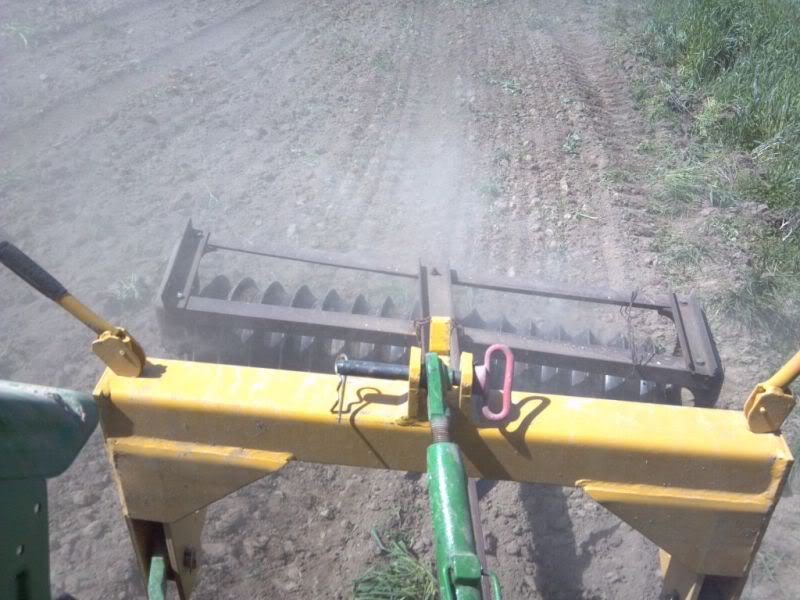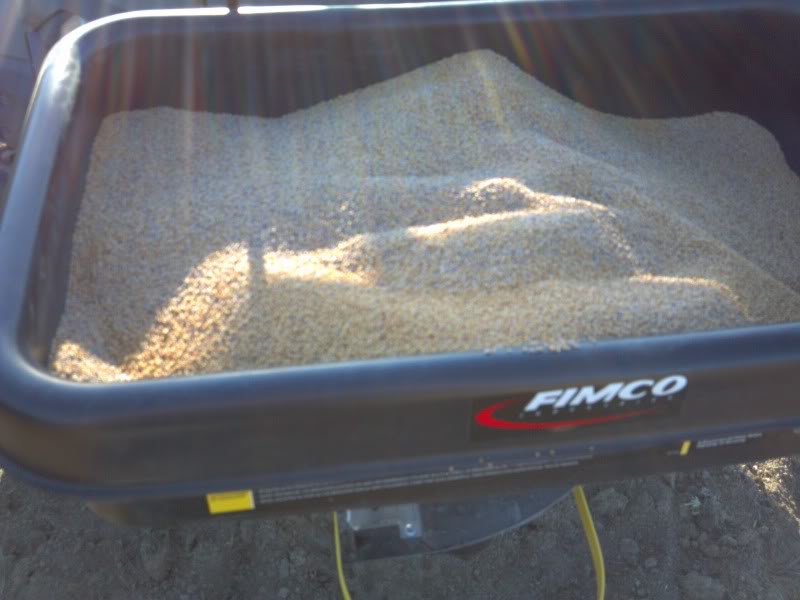April 18th, 2012
One of the most common mistakes I see is planting only one crop in a field and the second most common is leaving that field a "dirt plot" for most of the year. Brassica plots are just such a thing because from late winter until another crop is planted, (often in late summer) it's a waste land...devoid of deer. Forcing whitetails to seek another source of food is counter productive as is leaving your soil bare and and without cover.
All of these problems are easily solved by planting multiple crops within each feeding area and following crops like brassicas with a cover crop that is both good for the soil and whitetails and eventually easier on your budget as well.
I teamed up with a landowner to till under his dead brassica plots and get some oats and annual clovers planted
I used his Brillion seeder to plant both large and small seeds
I sowed 50#'s of Jerry oats using the large seed box set on 3.5
and we mixed both berseem and crimson clovers (not a must by any means but diversity is a plus)
Straight berseem is sown at 10-20#'s per acre
Crimson clover at 20-30#
so we set the seeder on 5 1/2 and shot for 20#'s of a 50-50 mix of the clover mix
The nice thing about strip plots is that the field ALWAYS has a food source growing and is never ever a dirt plot!
The winter rye is growing rapidly now and quickly reaching the unpalatable point
but the red clovers planted with it are lush and perfect to keep deer fed!
as the rye matures we can spray it, clip it or simply leave it alone...it is working hard to help improve our soil both above and below ground!
The rye/red clover on the left will be rotated to brassicas in July, the oat and annual clover strip will be tilled under in late august for the rye mix and the strip on the right is white clover. The rye will be clipped off from that strip and the white clover maintained as a 4-5 perennial
In tough situations sometimes buckwheat can be a good cover crop but whenever we can grow legumes such as annual clovers we are far better off. Clovers fix nitrogen for the next crop and will last all summer versus the very short growing period for buckwheat.
if the oats are not sown to thick we can leave them standing all summer, shred them with a mower just before tilling in late August and take advantage of some free oats seed for our rye mix. If they appear to be to thick and shading by mid summer, simply clip them off and give the annual clovers some sun!
Avoid having a dirt plot and forcing your deer to change their patterns, plant multiple crops in each feeding area, rotate those crops and build your soils, increase fertility, lower fertilizer and herbicide costs (I use NO herbicides at ALL on these strip plots!) and adapt your deer to coming there every day of the year...it's a win win situation using the following mixes....
Plant ALL in one plot in strips or blocks
Alice, KopuII, Durana (or comparable) white clovers 10% of plot...plant with the rye mix below and soil test for needed P&K/lime requirements. Lacking a soil test I use 400#'s of 6-28-28 and 500#'s of pel lime in my area.
Brassicas in 45% of plot
Purple Top Turnips 3#
Dwarf Essex Rape 2#
GroundHog Forage radish 5#
Plant in mid to late July in most midwest states, or 60-90 days before your first killing frost. Use 200#'s of 46-0-0 urea, 400#'s of 6-28-28 (or comparable such as 400#'s triple 19 ) Add lime per soil test. Follow the dead brassicas with 50#'s oats and 15-20#'s berseem and/or crimson clover in mid spring and no fertilizer is necessary at that time.
Cereal Grain combo in 45% of plot
Winter rye 50-80#'s per acre (56#'s = a bushel)
Spring oats 80-120#'s per acre (32#'s = a bushel)
Austrian Winter Peas or 4010/6040 Forage peas 20-80#'s per acre
Red Clover 8-12#'s per acre or white clover at 6#'s per acre
Groundhog Forage Radish 5#'s per acre
Plant in late August to early September, if following well fertilized brassicas only 100-200#'s of urea may be needed but first time plantings may need to be fertilized and limed as the noted for the brassicas.
Rotate the brassicas and rye combo each year



